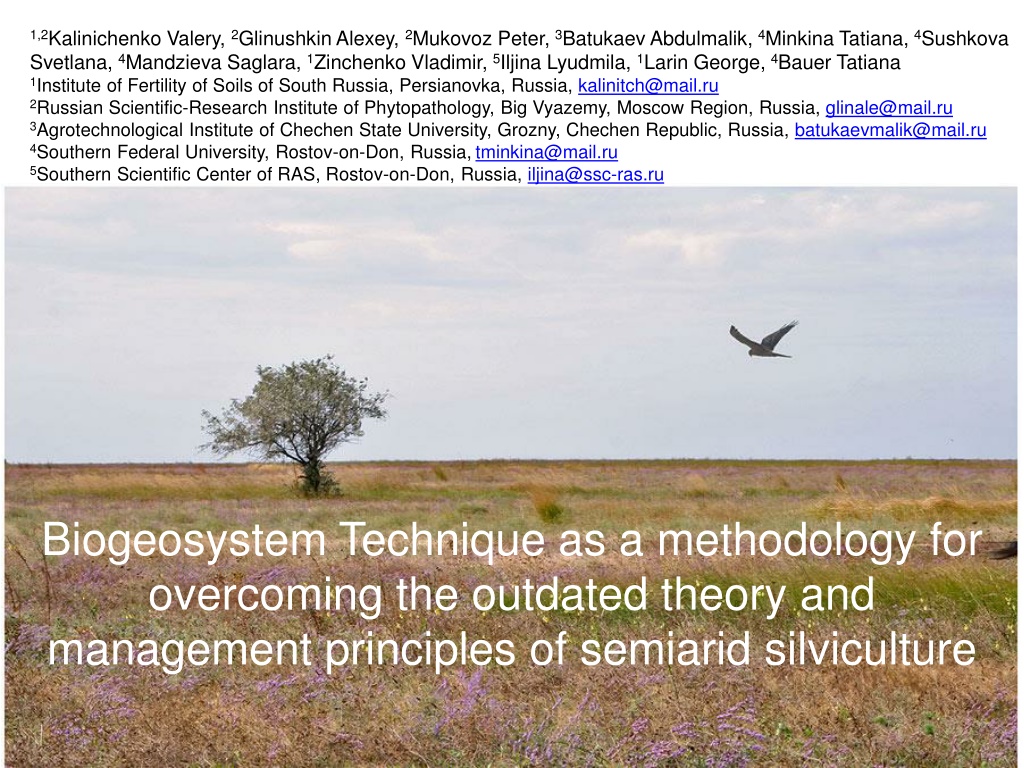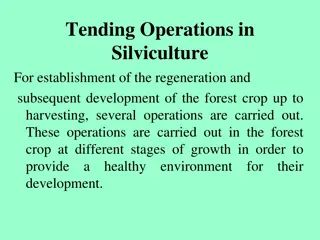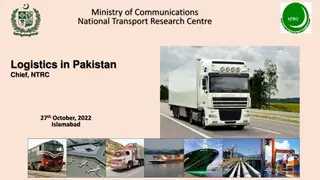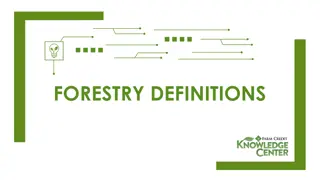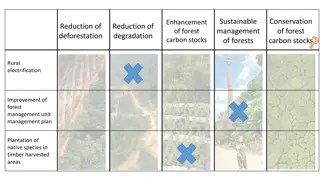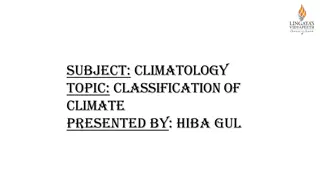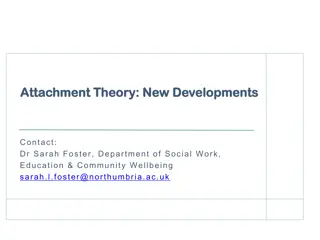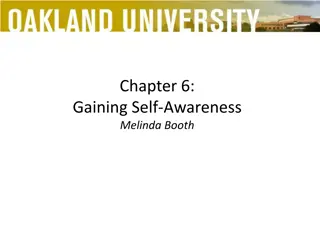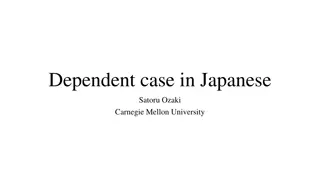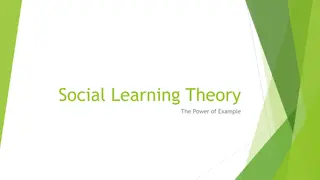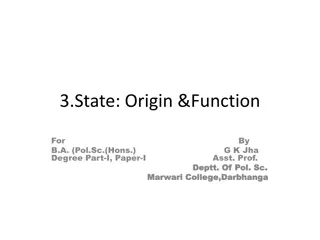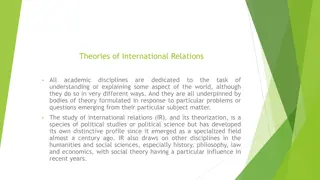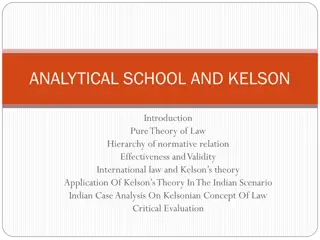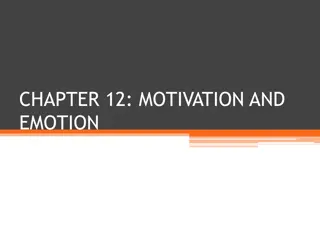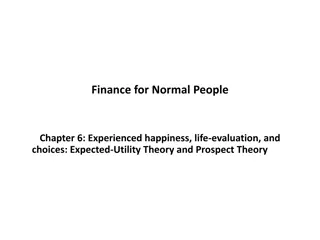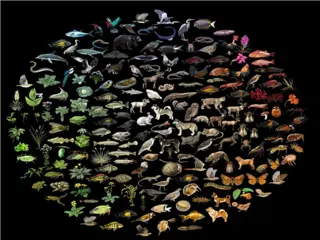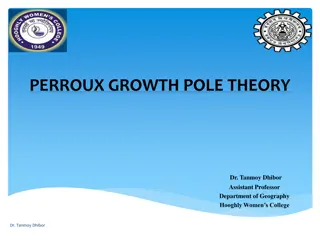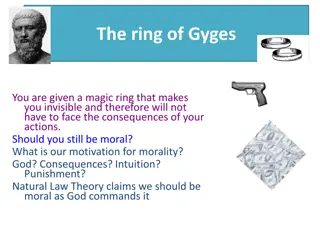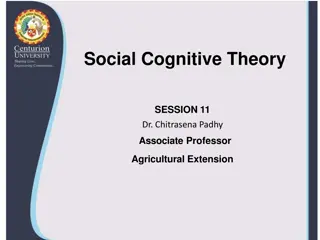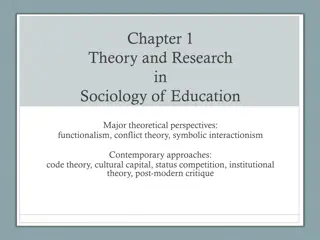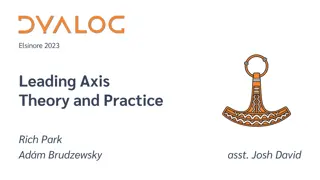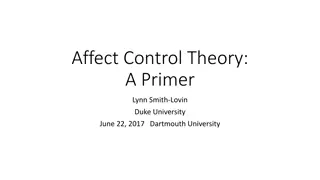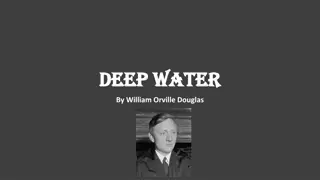Overcoming Outdated Theory in Semiarid Silviculture: A Biogeosystem Approach
Discussion on outdated theory and management principles in semiarid silviculture, focusing on assessing land use, industrial technologies suitability, and developing a technological platform for sustainable forest growth. Highlighting challenges faced by artificial forests in semiarid environments and proposing solutions for long-term success in forest development.
Download Presentation

Please find below an Image/Link to download the presentation.
The content on the website is provided AS IS for your information and personal use only. It may not be sold, licensed, or shared on other websites without obtaining consent from the author. Download presentation by click this link. If you encounter any issues during the download, it is possible that the publisher has removed the file from their server.
E N D
Presentation Transcript
1,2Kalinichenko Valery, 2Glinushkin Alexey, 2Mukovoz Peter, 3Batukaev Abdulmalik, 4Minkina Tatiana, 4Sushkova Svetlana, 4Mandzieva Saglara, 1Zinchenko Vladimir, 5Iljina Lyudmila, 1Larin George, 4Bauer Tatiana 1Institute of Fertility of Soils of South Russia, Persianovka, Russia, kalinitch@mail.ru 2Russian Scientific-Research Institute of Phytopathology, Big Vyazemy, Moscow Region, Russia, glinale@mail.ru 3Agrotechnological Institute of Chechen State University, Grozny, Chechen Republic, Russia, batukaevmalik@mail.ru 4Southern Federal University, Rostov-on-Don, Russia, tminkina@mail.ru 5Southern Scientific Center of RAS, Rostov-on-Don, Russia, iljina@ssc-ras.ru Biogeosystem Technique as a methodology for overcoming the outdated theory and management principles of semiarid silviculture 1
Outdated theory and management principles of semiarid silviculture are to be discussed understanding critically the larger-scale processes concerning the current level of land use, assessing as a whole the Humankind industrial technologies suitability for geospheres. Ecosphere technology conflict The task is to change an outdated imitative Nature use paradigm which causes: humic substances application to soil: soil and water health deterioration; waste, biosphere, climate uncertainties; false calls for outdated technologies slight modernization; false calls for carbon direct sequestration, and other mistakes in global elemental cycles management; Forests and forest lines degradation in the semiarid environment. Technological platform of Noosphere is to be developed concerning the fact that current multi-alternative business development model is becoming biosphere restricted. The way out has been proposed by Aristotle. Strong very elegant say: The techne is not a simple imitation, but the way for human to find a proper niche for completion the phenomena or processes "which nature does not bring to a finish" in her nonchalance. Aristotle 2
Forests and artificial forest lines at the climax stage are the source of greenhouse gases. The Chernozem and Kastanozem artificial forest systems have the obvious signs of the climatic suppression. The adverse influence of climate on artificial forests via summer droughts is aggravated by poor soil conditions for silviculture. The lifespan of artificial forests reduces from typical for most tree species of 200-800 years to short 30-60 years. In dry steppe, the habitus and dimensions of trees are worse in comparison to natural analogue in good conditions of development. Now the artificial forests in semiarid and arid areas do not suit the task of carbon sequestration, oxygen producing and climate correction. This aggravates the current uncertainty of biosphere. Standard outdated agronomy and soil reclamation technologies fail to prepare the soil for the long-term successful forest growth. The known silviculture technology fails to provide the forest soil watering, because standard irrigation is linked to enormous water consumption, soil and landscape degradation. 3
Geophysical properties of the components of Kastanozem soil complex of southern Russia dry steppe under the artificial forest stand belt of the 45-year after deep digger pre-planting plowing with passive working bodies to a depth of 45 cm in the summer vegetation period The number of tree roots D > 0.5 cm, pcs cross the plot of 20 cm2in soil profile Matric water potential, MPa Soil Density, t m-3 Hardness, psi Depth, cm aggregate > 5 cm, % Salic Solonetz under the forest belt 0 5 (forest litter) 5 20 20 40 40 60 60 80 80 100 0.30 20 0 1 0.2 1.34 1.42 1.57 1.66 1.74 300 400 590 810 1010 25 35 n.d. n.d. n.d. 4 3 1 0 0 0.4 0.5 0.7 0.7 0.9 4
For breakthrough the fundamental shortcomings of current industrial technological platform we propose a new field of science and technology world strategic development for the semiarid and arid forestry improvement. Biogeosystem Technique (BGT*). We mean BGT* as the only opportunity for further development and the way to overcome the large-scale calls: sustainable evolution of healthy soil, better soil conditions for humic substances, water saving, high soil fertility, high quality environment to increase the Biosphere stability and semiarid silviculture sustainability. BGT* interdisciplinary institutional innovative integrated solutions, environmentally and economically sound, increasing the Earth biogeochemical flux, ensuring the synthesis of highly stable biogeosystems. BGT* implements a transcendental (uncommon for Nature, non-imitating natural processes) technical approach to overcome the confrontation between technological development and biosphere. BGT* is proven in practice providing the synergy of theory and experiment. 5
BGT* provides pre-planting soil processing, soil watering and fertigation (chemisation) for proper long-term artificial forestry. The BGT* provide regulation of the fluxes of energy, matter (including organic carbon), water and higher biological productivity of artificial forestry: intra-soil machining provides productive fine aggregate system of the 20-50 cm soil layer for root development; waste intra-soil dispersed recycling while intra-soil machining of the 20-50 cm soil layer provides better soil reclamation, remediation, plant nutrition, macro- and micro elements (including heavy metals), matter organic matter transfer and turnover in the soil continuum; intra-soil pulse continuous-discrete plant watering reduces the transpiration rate, water consumption of trees is less for 5-20 times, and at the same time provides increased biological productivity of forest plantation, reversible biological sequestration of carbon. BGT* artificial forests, forest lines, recreational forest plantations can help to reduce the greenhouse emission, increase oxygen production, enlarge the soil carbon biological capacity, and improve silviculture land protective and recreational function. 6
Pedosphere and water Pedosphere is a geosphere where water operates as a major soil-biological driver. Soil-biological and silviculture result of humic substances, precipitation and irrigation depends on soil properties, dissolution and weathering of rocks. Chernozems and Kastanozems of the South Russia were studied. The properties of these soils are similar to that of the most world semiarid and arid soils. Therefore the obtained results are appropriate for the vast extrapolation throughout the world. 7
Copying Nature leads to upper soil layer excessive dispersion, dead-end porosity, compaction and heavy block structure. Soil aggregates composition is inappropriate for plants. Mineral-water interfaces are deteriorated. Efficiency of humic substances is restricted. Standard tillage technology imitates geological weathering No-till technology gives no conditions for roots development Standard soil reclamation tillage fails to transform the soil aggregate system adverse properties. 30 years after three-tier tillage not destroyed macro-aggregates of 20-45 cm soil illuvial layer remain impervious for roots. 8
Results of uncontrolled preferential soil solution fluxes in the profile of dry steppe chestnut soil (Kastanozem) 9
Unstable soil biogeochemical barriers are a consequence of the soil solution calcium-carbonate equilibrium, as well as the other chemical equilibriums. The program ION-2 was developed for the soil solution composition quantitative thermodynamic representation considering calcium carbonate equilibrium (CCE), association and complexation of ions. CCE is a driver of mobility, transfer, cycling, and bioavailability of carbonates, organic matter, nutrients, and microelements including heavy metals. 10
Program ION-2 (fragment) + + + 2 2 3 2 Ca CO Ca HCO SO 2 3 2 4 CO MgCO 3 = = 3 K ; K + = + + + 2 2 Ca Ca 1 CaCO CaHCO + 0 3 CaCO CaHCO K K K 3 3 3 CaCO CaHCO CaSO 3 3 4 + 2 2 4 Ca SO + SO 2 3 2 4 CO HCO = ; K 3 + = + + + 2 2 Mg Mg 1 CaSO 0 4 CaSO 4 K K K MgCO MgHCO MgSO 3 3 4 + + 2 2 3 2 2 3 Mg CO Mg HCO + SO 2 3 2 4 CO = = K ; K ; + = + + Na Na 1 MgCO MgHCO + 0 3 MgCO MgHCO 3 3 K K 3 NaCO NaSO 3 4 + 2 2 4 Mg SO = + + + 2 2 K Ca Mg Na MgSO = + + + 2 3 2 3 0 4 CO CO 1 MgSO 4 K K K CaCO MgCO NaCO 3 3 3 + + 2 3 2 4 Na CO Na SO + + 2 2 Ca K Mg K = = K ; K . = + + CO HCO 1 NaCO NaSO NaCO NaSO 3 4 3 3 3 4 CaHCO MgHCO 3 3 * I + + + 2 2 Ca Mg Na = 2 * lg 0,2 y z I SO = + + + 2 4 2 4 SO 1 K K K + * 1 I CaSO MgSO NaSO 4 4 4 2 2 2 3 2 3 2 4 CO K CO K HCO K SO K Cl K OH K OH K ) ( = 1 k + C C , 3 = + + + + + + k ME asME ME asPb PbCO Pb(CO ) PbHCO PbSO PbCl PbOH Pb(OH) 3 3 2 3 4 2 C(Ca)C(CO3)=S [Ca2+][CO32-]=C(Ca) (Ca)C(CO3) (CO3)=S1; [Ca2+]as[CO32-]as=C(Ca) (Ca)fas(Ca)C(CO3) (CO3)fas(CO3)=S2; [Ca2+]as+om[CO32-]as+om=C(Ca) (Ca)fas(Ca)C(CO3) (CO3)fas(CO3)fom(CaCO3)=S3; fom(CaCO3) = (1 + 100 (DOM 0.01)-1.4. 11
The natural soil solution is oversaturated with CaCO3. Accounting ion analytical concentration (S), ion activity (S1), ion association (S2), ion association and organic matter content (S3) compared with the standard solubility product S0(S/S0, S1/S0, S2/S0, S3/S0), the calculated via ION-2 oversaturation degree up to 1000 was revealed. Oversaturation increases organic matter mobility and leaching, degradation of soil internal surface, and causes a dangerous for plants heavy metals high bioavailability. Under intra-soil milling and intra-soil pulse continuous-discrete watering, the soil solution equilibriums are more controllable as the soil micro-aggregate system is stable, the quantity of corresponding discrete soil solution micro-basins to accept larger soil solution volume is greater, and the general soil humidity is relatively low. This decreases the soil organic matter mobility and leaching. At the same time the association and complexation of heavy metals is increased, and their bioavailability reduces. Soil solution micro-basins differentiation is a source of high-quality soil solution for plants. Biogeochemical barriers soil plant , soil vadose zone will become more reliable. Humic substances functioning will be the best, providing silviculture. 12
BGT* Soil improvement intra-soil milling device and technology. Transcendental artificial weathering not the soil upper layer, but internal soil illuvial layer. 20-45 cm layer intra-soil milling forms soil illuvial horizon micro- and mezo-aggregate geophysical system structure. The mineral-water interfaces become more controllable. Favorable conditions for humic substances, rhizosphere, plant and tree are creating. Machines were developed, field trials fulfilled. Patent SU 353665. 1969. Milling working body fully immersed into the soil. PMS-70. 1972 FS-1.3. 1976 1 frame, 2 hitch, 3 topsoil layer plow, 4 driveline, 5 onboard reducer, 6 final side drive, 7 soil inner layer milling ripper, 8 support wheels. PMS-100. 1974 13
Dubovka experimental site. PMS-70 trial, 1972. After precipitation or irrigation, the water front cause excessive dissolution and weathering of rocks, the soil organic-mineral aggregates system is dispersed. Root system is expelled into the upper soil horizon, illuvial horizon morphons degrade. Soil dead-end porosity is up to 99%. Conditions for humic substances and silviculture are unfavorable. Standard agronomy practice. Dense gray soil illuvial horizon impermeable for roots. 14
After intra-soil milling, the soil micro-aggregates prevail, water penetrates the soil freely. This provides the multilevel soil mineral-water interfaces, promotes flocculation of the soil particles and dissolved organic matter. Internal soil geophysical and organic-mineral structure surface become more stable. The plants consume less energy and water, simultaneously use more nutrients, sequestering more CO2and releasing more ionized O2most useful for CH4and other air pollutants oxidizing and stability of the Earth atmosphere. Soil microbiological process important for soil mineral-water interfaces is optimized, C content is increased: in 0-20 cm layer for 25%, in 20-40 cm layer for 60%. 36 years after 20-45 cm layer intra-soil milling 30 cm depth Soil structure is stable. Roots. 35 cm depth Soil structure is stable. Roots. C and nutrients turnover is getting richer (better N fixation from atmosphere), the biosphere and climate system are becoming more buffered and certain. 40-45 cm depth Good soil aggregate structure. Roots. No signs of illuvial horizon restoration. Best conditions for humic substances functioning, and silviculture. 15
Soil aggregate 1-3 mm fraction content after soil processing, % Depth of sampling, cm Soil before plowing Moldboard tillage, 0-22 cm (standard) PTN-40 three-tier plowing, 0-45 cm PMS-70 intra-soil milling, 20-45 cm 0 20 8,2 14,4 15,9 18,2 20 40 21,3 17,1 20,8 39,6 Soil aggregate 1-3 mm fraction content after intra-soil milling at a depth of 20-40 cm was high, and now is the same. One-time intra-soil milling of the 20-45 cm soil layer promotes good conditions for rhizosphere development, long-term up to 40 years high plants productivity. The soil evolution is stable. Winter wheat plants, 1973: to the left moldboard tillage, 0-22 cm in the middle three-tier process PTN- 40, 0-45 cm to the right intra-soil milling PMS-70, 20-45 cm 16
Economical effect comparison Remontnoye experimental site. FS-1.3 trial, 1976 Standard methods against Kastanozem intra-soil milling. Winter wheat, 2006 Unit Standard tillage, 0-22 cm Three-tier tillage, 0-45 cm 20-45 cm layer intra-soil milling Productivity, 2006, t/ha Yield increase, % Effective process Validity, years Incurred expenses for soil amelioration, in Ratio Depreciation of the equipment, in Ratio Total expenses, in Ratio Profitability, % 4,14 5,12 23,7 6,58 58,9 0 10 30 0 1 3 0 1 2 1 1.3 1.1 57,1 22,4 22,9 In 2006 profitability of winter wheat was triple compared to standard tillage. 17 17
Intra-soil milling ripper PMS-260 Factory test The drive of PMS-70, PMS-100, FS-1.3 devices was mounted inside the passive soil ripper, so the traction resistance of machine was too high. The mills on the horizontal shaft are the same. New device contains a ring drive with cutting tools on the outer edge for soil slotting. This provides the drive free passage. Passive traction resistance is10 times less, power consumption is 50% less compared former technical decisions. Effective illuvial soil layer processing. Long-term mineral-water interfaces and humic substances improvement. 18
Planting trees method The biological basis to extrapolate the intra-soil milling into the sphere of silviculture is a close proximity of the root system key nutrition function of annual and winter crops and trees. This function is uniform for the Plant Kingdom various representatives. Patent RU 2498550 2, 20.11.2013 For silviculture, we propose the pre-planting methodology by intra-soil milling to a depth of 30 60 cm following the fact that the tree lifespan is longer, and their root system spreads deeper than that of annual and winter crops. Rotary soil milling: 1 layer of 0-30 cm, strip of 5-7 cm; 2 layer of 30-70 cm, strip of 60-80 cm; 3 seedling; 4 roots; 5 soil surface; 6 plants row. Sustainable forest cultures in urban, techno rural landscapes. High decorative habitus and long-term life of trees. 19
Current irrigation paradigm Irrigation consumption is 95% of freshwater global resources. Standard irrigation water losses are 4 15 times greater than empirically determined irrigation water need of plants. Current outdated irrigation paradigm is imitational, gravitational, frontal, and continuous-isotropic, and inappropriate for soil organic matter synthesis, as well as for humic substances. This paradigm is improper for silviculture. Reasons for the new developments in the field of plant water supply are obvious. Water consumption for irrigation, m3/ha per year. In the world up to 50 000 m3/ per year. USA Water consumption up to 6 ft per year 20
Drip irrigation Water consumption is up to 12 000 m3/ha Drip irrigation (or subsoil drip irrigation) causes profile and lateral water loss due to emitter water discharge deviation, soil local over- moistening and dispersion, and soil and vadose zone water preferential flows. Result: loss of soil quality, loss of fertilizes and nutrients. Current simulating gravitational frontal continuous-isotropic irrigation paradigm is environmentally dangerous, and not only in itself, but in focus of uncontrolled mineral-water interfaces. 21 21
Changing Paradigm in Irrigation Water Management! And where are you seeing a change? Extremes or desert, or swamp. This is not a beneficial reuse. Loss of water. Leaching of nutrients. Bad quality of reused water. Spoiled C, nutrients, humic substances. Soil and landscape bad health. 22
The combination of a water supply phase to the soil and a phase of water spreading into the soil we call the systemic hydrological defect of biosphere . Current irrigation paradigm is based on imitation of natural rain, drip, surface or subsurface water fluxes to soil. This systemic disadvantage simultaneously reproduces other natural hydrological process features soil over-moistening, preferential water fluxes through the soil to vadose zone and saturation zone, uncontrolled mineral-water interfaces, biogeochemical process violations, weakened biogeochemical barriers for contaminants, and landscape waterlogging. At irrigation, including greenhouse production industry, the goal soil water potential (FC 0.033 MPa) corresponds to the high soil moisture. This soil water content is excessive for most plant species growth, as well as for the subsequent production quality and human health. This is a state of potential transpiration plant stomatal apparatus is fully opened. Soil solution is extremely diluted, plants are forced to pump out the excess water. Soil water-mineral interfaces are ruined, soil aggregates become dispersed. So the high soil moisture is to be maintained, otherwise a poor soil structure aggregates system will limit the plant growth which monotonously declines as the soil water potential decreases (blue curve). Results: excessive evaporation and transpiration, irreversible water loss via soil and vadose zone preferential water flows. HMs free transfer from diluted soil solution to the plant tissue, and bad environmental quality of production. Humic substances, soil and landscape degradation. 23
Do not drown a plant Hydraulic conductivity, cm/day r/ r0 Stomatal apparatus is fully open Transpiration excess Wilting Stomatal regulation of transpiration P thermodynamic water potential, bar Relative transpiration ( r/ r0) 24
BGT* Intra-soil pulse continuous-discrete paradigm of watering. Transcendental dividing a phase of water supply to the soil and a phase of water spreading throughout the soil. On the first supply stage t0-t5water is injected by syringe 1 into the soil humidification cylinder 2 of 1.5 2.5 cm diameter at a depth from 10 to 35 cm. On the second spreading stage in 5 10 min after injection the water redistributes via capillary, film and vapor transfer. An ambient soil carcass is dry and mechanically stable. This provides quick aggregation of hydrodynamically disturbed soil zones and effective stable multilevel mineral-water interfaces. Resulting matrix soil water potential is of 0.2 MPa. Soil solution concentration is optimal for plant nutrition. Stomatal apparatus of plants operates in regulation mode providing saving water, and CO2fertigation. HMs are passivated in soil. Higher plant pathogen resistance. The plants biological productivity is high (red curve). Water consumption is reduced for 5-20 times. Resource and energy economy 10- 30 times. Water is supplied precisely into individual soil volume without transition through the soil continuum providing the best conditions for humic substances, soil biota and soil health, and silviculture. Biotechnology, mechatronics, robotics. 25
Highest Biomass growth rate of xerophyte plants Hydraulic conductivity, cm/day r/ r0 Lesswater consumption rate Stomatal apparatus is fully open Transpiration excess Wilting Stomatal regulation of transpiration P thermodynamic water potential, bar Relative transpiration ( r/ r0) 26
Intra-soil pulse continuous-discrete watering No signs of soil dispersion at intra-soil pulse continuous- discrete watering. Spring barley seedlings are in optimal condition. Standard irrigation At standard irrigation the signs of soil dispersion are obvious cracks, crusts, subsidence, and deformation of soil carcass. The spring barley seedlings are weakened. 27
Water scarcity and soil degradation are closely linked to other environmental problems In result of standard concentrated waste utilization on land, in upper soil, in subsoil, into geological deposits, into the sea or elsewhere the hazardous substances and infections are spreading by air, surface, subsurface, ground water, and biologically. Concentrated waste metamorphism gives the new more perilous substances. Useable nutrient, soil structuring substances and humic substances are wastefully lost in vain. These substances are useful for agriculture and silviculture. Florida Phosphogypsum stack Rostov Region Bird droppings in the open storage. Poor veterinary and medical sanitary quality of environment. C loss. Other waste situation is the same. 28
Attempts to use the soil Subsoil manuring Substance is supplied through the channel inside the ripper to the bottom of the slit. No mixing with soil. Awful mistake of C sequestration via burying Biochar is placed to subsoil layer without mixing with soil. The aim is to exclude C biological availability and C involvement into the soil microbiological process, reduce the C return to atmosphere and biosphere. 29
Standard surface waste utilization causes concentrated contamination and infection of environment. The soil dead-end porosity rises, soil internal surface degrades, as well as the mineral-water interfaces and humic substances. Utilization of liquid waste using irrigation equipment (surface, sprinkler, drip) gives the same adverse result. 30
Standard incineration, aerobic composting strain air, soil, and water quality and health. Vienna. The Spittelau incineration plant. Dioxins, NOxetc. Design: Friedensreich Hundertwasser The Baltika project www.eco.sznii.ru/booklet.pdf The Baltic Sea is polluted, so: Mix manure with earth by bulldozers the best way to absorb organic pollutants . Waste recycling technologies in a framework of outdated industrial ideas are dangerous. 31
Waste does not exist The unique Earth s substances are used incorrectly and in result of Humankind's carelessness are withdrawn from ecosphere process. The task is to shorten the biogeochemical cycle feedback, to return the so called waste into biosphere and improve conditions for humic substances. This will provide plants and trees growth. The simplest model: Should the turnover (return) rate of the same waste amount (speaking properly substance) be 10 fold faster, the capacity of biosphere will be 10 times greater. Forests and swamps are assessed as the global C sinks. But this function is substituted by C emission on the climax stage. The fate of C in litterfall (Coweeta Hydrologic Laboratory study) in the South facing deciduous forest was as follows: 14.3% was lost as leaching of dissolved organic C, 2.2% was lost as downward fine particulate matter flux from the bottom of the forest floor, 78.2% was mineralized (by mass balance), leaving only 5.4% of foliar litter after 13 years of decomposition. The current annual C loss is high even in the mountain not degrading mature forests a long before their climax stage. This loss in the steppe environment forest, of course, is much higher. The forest C turnover is to be controlled artificially to exclude uncontrolled degradation and C excess to atmosphere. 32
BGT* provides tree increased life span and higher wood gain. This makes forest recreational potential higher and long-term. C reversible biological sequestration is provided in aboveground and underground biomass. Ionized O2production and oxidation atmosphere potential are higher. Extended timber production is possible. More gas product can be obtained from mature tree biomass and timber waste. Nutrient turnover become richer. This is important both for the forest ecosystem and urban systems. The urban system life potential is degrading now in the absence of reliable intra-quarter recreational potential of trees, forest massives and forest lines. In BGT* focus, the current technological C and other fossil chemical elements biosphere excess is a positive circumstance. This is linked to the forest C turnover, and forest circulation. On the basis of BGT* methodology the soils will become the soil-biological chemical reactor with stable well developed organic mineral-water interfaces for environmentally safe biological matter additional amount producing. 33
BGT* Intra-soil applying of substance in the course of intra-soil milling. Transcendental excluding a phase of matter surface supply to the soil, and direct supply of matter to illuvial soil horizon for better soil organic-mineral-water interfaces providing and priority conditions for humic substances and trees. The soil milling device is the same, the disc 2 is provided with channel 5, ramp 6 with channel 7 and nozzles 8 for feeding substance in loose, granular or liquid form into processing soil layer. For improved delivery reliability and increased supplied substance flow rate, the use of a pulsed pneumatic transportation is provided. 1 frame, 2 drive, 3 disk, 4 rotor milling ripper, 5 pulp feeding channel, 6 distributing ramp, 7 pulp channel in a ramp, 8 - nozzle. Organic and mineral substances of any nature for recycling: industrial, agricultural, household, hazardous biological wastes (including slaughterhouse waste), amendments, pollutants, high carbon biochar, carbon free biochar (a a reverse gas flow organic waste gasification product), humic substances and other. 34
C containing waste recycling 2 reverse gas flow gasifier; 6 gas purifier (in carbon free biochar); 9 buffer of carbon free biochar; 28 buffer of flying ash; 29 buffer of syngas; 11-26 intra- soil recycling system of carbon free biochar; 20 rotor intra-soil milling ripper. 35
BGT* Intra-soil pulse continuous-discrete fertigation chemigation device Instead of water system eutrophication. Instead of wastewater excessive cleaning via reverse osmosis. Breaking the trophic chains of pathogen spread provides a high medical and veterinary sanitary safety of environment. Soil micro-biota is much more resistant to pollution (even to white phosphorus) compared to higher organisms, and transforms pollutants to nutrients or insoluble forms of chemical compounds. 1 - electrical supply unit 2 - chassis 3 - control unit 4 water and matter supply unit 5 - drive 6 - axis 7 - syringe element 8 - flexible coupling with central channel 9 - retractable sliding syringe Mechatronics, robotics institutional technical solution for silviculture 36
The BGT* methods reduce the loss of organic matter from soil to vadoze zone and atmosphere; reduce greenhouse emission from soil and forest, and improve agro- ecological environment. Apply of the BGT* methods to the dry steppe Chernozem and Kastanozem artificial forest systems will increase the artificial forests oxygen and biomass production, prolong forest lifespan, improve the silviculture land protective function, and mitigate climate change. BGT* robotic systems will be of low energy and material consumption, will improve forestry, agriculture, reduce the biosphere and climate uncertainty, insure the recreational appearance of forest, make the life attractive. Chernozem and Kastanozem long-term Russian steppe terrain silviculture system: intra-soil 20-50 cm milling; waste intra-soil dispersed recycling while intra-soil 20-50 cm machining, intra-soil pulse continuous-discrete plant watering; Higher artificial forest biological productivity, reversible carbon biological sequestration, soil fertility, human and soil health. 37
Concluding remarks on BGT* possibilities for silviculture: In BGT* case, the standard remote soil sensing system, as well as the models of soil water content and transfer, xerotization, yield, climate dynamics require a cardinal revision. On the contrary, the new experiments and models of surface, mineralogical phenomena, discrete soil matter transfer are possible. An opportunity appears to study the more developed soil inner surface structure, as well as the corresponding mineralogical composition conversion, and organic and mineral-water interfaces caused by the BGT* soil evolution vector. BGT* is a long-term research base to elucidate the new multilevel organic and mineral- water interfaces dynamics, pollutants conversion to insoluble forms a certain (sought-for) fate of contaminants. BGT* methodology helps to achieve the soil interfacial phenomena better understanding, ensures soil processes, humic substances predictable dynamics. The new water paradigm (water strategy) gives a higher level Synergy between Theory & Experiment in irrigation and other applications of water use and water regime. 38
We propose the BGT* methodology as a development basis for the new environmentally safe robotic high level chemical engineering for soil, water, and humic substances. BGT* new water strategy mitigates greenhouse effect reducing transpiration rate. BGT* is linked to the sea water desalination problem. BGT* is promising for silviculture important two level recreational system. There are many other possibilities for BGT* implementation as an alternative method to enhance the efficiency of policy makers and managers in Noosphere: mitigate the impact of water scarcity on food security and food safety, extend reproduction of soil, water, and environment health, high level stability of Biosphere and Climate. For ending the presentation again a few words about the technology & biosphere co-evolution: We try to promote the BGT* as a new niche for harmony which Aristotle has called us to. Final keynote is as follows: We offer the BGT* approach as a framework of the future International Partnership Russia scientific and technical project. It will be a contribution of leading countries to development of the world level nature-based technologies. 39
Everywhere in the world the soils are degraded as well as the soil mineral- water interfaces. For many years, the world water scarcity was obvious, the waste disposal problem was acute. There is a strong need to accept the BGT* paradigm. Biosphere has no alternative, and this fact has to become a BGT* basis of the future world business strategic development model, and silviculture relevance. The BGT* reduces the organic matter loss from soil into vadoze zone and atmosphere; reduce greenhouse emission from soil and forest, and improve the agro-ecological environment. Apply of the BGT* methods to the dry steppe Chernozem and Kastanozem artificial forest systems will increase the artificial forests oxygen and biomas production, prolong forest lifespan, improve the silviculture land protection function, and mitigate climate change. BGT* robotic systems will be of low energy and material consumption, will improve forestry, agriculture, reduce the biosphere and climate uncertainty, insure the recreational appearance of forest, make the life attractive. 40
Reason to accept our point of view Research, patents and applied results acknowledgement: Achievements of the National Economy of the USSR), 1975; Silver medal of VDNKh, 1976; Bronze medal of VDNKh, 1977 and 1986; Vernadsky Award, 2008; Golden medal of X Moscow International Saloon of Innovation and Investment, 2010; Golden medal of All-Russia Exhibition Center (Exhibition Golden Autumn ), 2010; Two Silver medal of All-Russia Exhibition Center (Exhibition Golden Autumn ), 2010; Bronze medal of All-Russia Exhibition Center (Exhibition Golden Autumn ), 2010; Diploma of IX Investment Economical Summit, Sochy, 2010; Diploma of High Technology Exhibition, Rostov-on-Don, 2010. Golden medal of VDNKh (Exhibition of Vernadsky Award, 2008 41
Academic Publishing House Researcher s.r.o. http://aphrsro.net/ http://ejournal19.com http://ejournal33.com http://ejournal51.com 42
Thank you for your kind attention Colleagues Valery P. Kalinitchenko(right) 43
